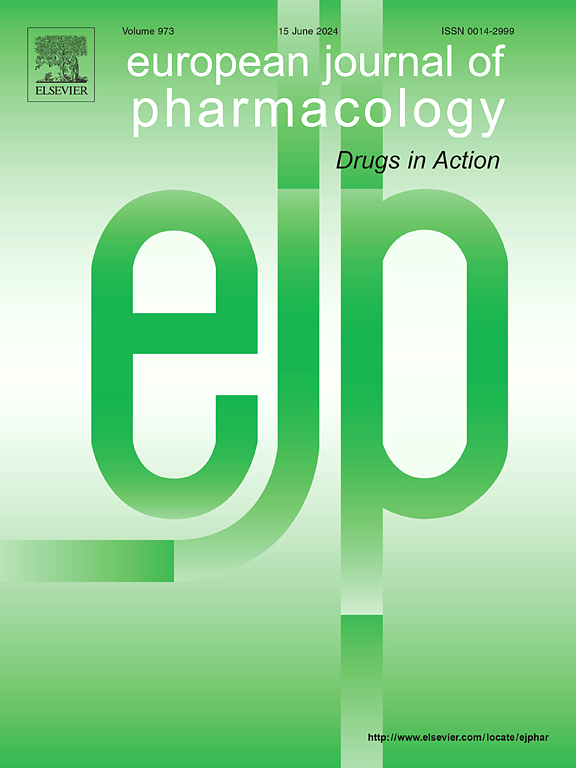Pyr3 inhibits cell viability and PKCα activity to suppress migration in human bladder cancer cells
IF 4.2
3区 医学
Q1 PHARMACOLOGY & PHARMACY
引用次数: 0
Abstract
Bladder cancer, more prevalent in men, has high recurrence rates in non-muscle-invasive forms and is highly lethal upon metastasis in muscle-invasive cases. Transient receptor potential canonical channels (TRPCs), specifically TRPC3, play a role in calcium signaling, influencing cancer cell behavior. This study examines the effects of Pyr3, a TRPC3 inhibitor, and TRPC3 knockdown on both muscle-invasive (T24) and non-muscle-invasive (RT4) bladder cancer cells. Pyr3 treatment reduced cell viability, migration, adhesion, and calcium influx in these cells. Additionally, Pyr3 treatment and siTRPC3 downregulated protein kinase C alpha (PKCα), phospho-PKCα, and protein phosphatase 2A (PP2A) levels. While PKC activator phorbol 12-myristate 13-acetate (PMA) could not restore Pyr3-induced viability loss, it reversed the migration inhibition. In a xenograft model, Pyr3 suppressed T24 cell viability, Ki67, phospho-PKCα, PP2A and TRPC3 expression. These findings suggest that Pyr3 inhibits bladder cancer cell migration through PKC signaling and holds potential as a therapeutic agent for bladder cancer.
Pyr3通过抑制细胞活力和PKCα活性抑制人膀胱癌细胞的迁移。
膀胱癌多见于男性,非肌肉侵袭性膀胱癌有很高的复发率,而肌肉侵袭性膀胱癌的转移是高度致命的。瞬时受体电位规范通道(Transient receptor potential canonical channels, trpc),特别是TRPC3,在钙信号传导中发挥作用,影响癌细胞行为。本研究探讨了Pyr3(一种TRPC3抑制剂)和TRPC3敲低对肌肉侵袭性(T24)和非肌肉侵袭性(RT4)膀胱癌细胞的影响。Pyr3处理降低了这些细胞的活力、迁移、粘附和钙内流。此外,Pyr3处理和siTRPC3下调蛋白激酶Cα (PKCα)、磷酸化PKCα和蛋白磷酸酶2A (PP2A)水平。PKC激活剂phorbol 12-肉豆蔻酸酯13-乙酸酯(PMA)不能恢复pyr3诱导的活力丧失,但可以逆转迁移抑制。在异种移植模型中,Pyr3抑制T24细胞活力、Ki67、磷酸化pkc α、PP2A和TRPC3的表达。这些发现表明Pyr3通过PKC信号抑制膀胱癌细胞的迁移,并具有作为膀胱癌治疗剂的潜力。
本文章由计算机程序翻译,如有差异,请以英文原文为准。
求助全文
约1分钟内获得全文
求助全文
来源期刊
CiteScore
9.00
自引率
0.00%
发文量
572
审稿时长
34 days
期刊介绍:
The European Journal of Pharmacology publishes research papers covering all aspects of experimental pharmacology with focus on the mechanism of action of structurally identified compounds affecting biological systems.
The scope includes:
Behavioural pharmacology
Neuropharmacology and analgesia
Cardiovascular pharmacology
Pulmonary, gastrointestinal and urogenital pharmacology
Endocrine pharmacology
Immunopharmacology and inflammation
Molecular and cellular pharmacology
Regenerative pharmacology
Biologicals and biotherapeutics
Translational pharmacology
Nutriceutical pharmacology.

 求助内容:
求助内容: 应助结果提醒方式:
应助结果提醒方式:


